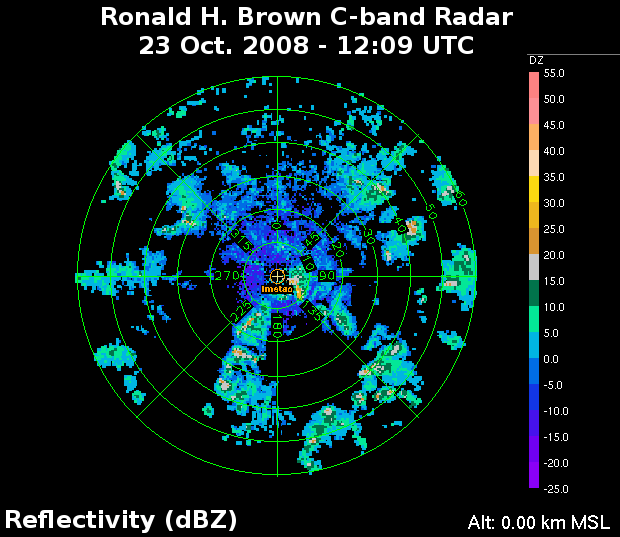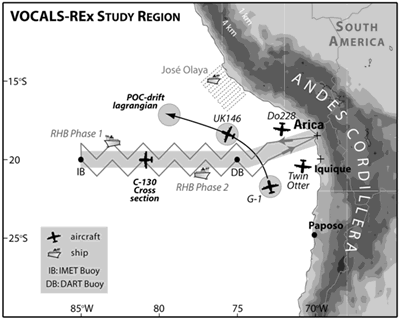
Courtesy of Matthew Miller | ||||
| ||||
You might also be interested in:

Traveling Nitrogen Classroom Activity Kit
Check out our online store - minerals, fossils, books, activities, jewelry, and household items!...more
What is VOCALS?
What if you wanted to learn more about the climate system of a very large area such as the Southeast Pacific Ocean? What would be involved in studying how the oceans, land, and atmosphere interact? You...more
Drizzle
Drizzle is light precipitation that is made up of liquid water drops that are smaller than rain drops. Drizzle can be so light that only a millimeter of accumulation is measured at the Earth's surface....more
Stratocumulus
Stratocumulus (weather symbol - Sc) clouds consist of water droplets and belong to the Low Cloud (surface-2000m) group. These clouds are low, lumpy, and gray. These clouds can look like cells under a microscope...more
What are the results of VOCALS?
Long after the VOCALS campaign is completed, the scientists’ work will continue. They must process, review, and study the data to determine what has been learned. Many model runs will be made and analyzed....more
Rhea George
Many students in atmospheric science were motivated to enter the field by some fascinating extreme weather event experienced as a child. This was not the case with me. When I was an undergraduate I was...more
Dr. Boris Dewitte
I'm a physical oceanographer interested in climate variability and especially the El Niño phenomenon. Other than the annual cyle of the seasons, El Niño is the largest pulsation of the climate. I'm interested...more
Dr. Paquita Zuidema
Hola! I am originally from the Netherlands and thereafter spent 3 years as a child in the Peruvian Andes, but I have lived most of my life in the United States. I received my bachelor's degree in physics...morePlease log in
Science Blogs
Real Climate: climate science from climate scientists

Windows to the Universe, a project of the National Earth Science Teachers Association, is sponsored in part is sponsored in part through grants from federal agencies (NASA and NOAA), and partnerships with affiliated organizations, including the American Geophysical Union, the Howard Hughes Medical Institute, the Earth System Information Partnership, the American Meteorological Society, the National Center for Science Education, and TERC. The American Geophysical Union and the American Geosciences Institute are Windows to the Universe Founding Partners. NESTA welcomes new Institutional Affiliates in support of our ongoing programs, as well as collaborations on new projects. Contact NESTA for more information.




